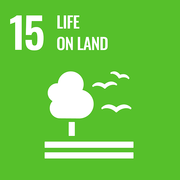
A "safety net" for biodiversity
The alarm on the protection of biodiversity starts from afar, and it has already been possible to draw up a balance sheet − unfortunately not positive − on the goals that the UN Convention on Biological Diversity had set for 2020. The failure to achieve the targets set has forced the scientific community to reflect while waiting for the Conference of Parties scheduled for May 2021, which will have to set the Agenda for 2030 and 2050.
Hence, the study "Set ambitious goals for biodiversity and sustainability” by 60 researchers from 27 countries, now published in the prestigious journal Science. The team, which includes Carlo Rondinini of the Department of Biology and Biotechnology "Charles Darwin" of Sapienza, has outlined the scientific basis for redesigning the goals on biodiversity, starting from a careful analysis of what has emerged and circulated so far in view of the UN Convention on Biological Diversity.
The work does not judge the individual segments that are being sketched out and that will become the future Goals but establishes, based on scientific assessments, the scenario within which to balance the actions.
"The starting point is that all parts of nature are connected and we must take this into account", says Carlo Rondinini. What would be the point of an ambitious goal on the protection of species that disregards the protection of the ecosystem? The effort we have made is precisely in establishing through the scientific method how the goals strengthen or weaken each other, also creating a concrete toolkit for the international negotiators who will be around the table to set future targets."
The result of the shared research is a comprehensive, independent, scientifically based and unprecedented evaluation report, conducted through the lens of three main considerations: there is an explicit risk in setting the contour and level of a single action unrelated to the others; targets must be multiple, coherent and carried out with a holistic approach; feasibility is something to be considered when setting each goal, but at the same time, ambition is also needed otherwise to trigger a fruitful counter-trend on the issue of biodiversity in 2050 will not be possible.
"The study provides a scientific basis aimed at distinguishing between low and high impact goals and a real checklist that ensures a balance between them − continues Rondinini. "It also indicates a few fundamental steps: the targeted restoration of ecosystems, the minimum loss of species and the conservation of 90% of genetic diversity."
References:
Set ambitious goals for biodiversity and sustainability −Sandra Díaz, Noelia Zafra-Calvo, Andy Purvis, Peter H. Verburg, David Obura, Paul Leadley, Rebecca Chaplin-Kramer, Luc De Meester, Ehsan Dulloo, Berta Martín-López, M. Rebecca Shaw, Piero Visconti, Wendy Broadgate, Michael W. Bruford, Neil D. Burgess, Jeannine Cavender-Bares, Fabrice DeClerck, José María Fernádez-Palacios, Lucas A. Garibaldi, Samantha L. L. Hill, Forest Isbell, Colin K. Khoury, Cornelia B. Krug, Jianguo Liu, Martine Maron, Philip J. K. McGowan, Henrique M. Pereira, Victoria Reyes-García, Juan Rocha, Carlo Rondinini, Lynne Shannon, Yunne-Jai Shin, Paul V. R. Snelgrove, Eva M. Spehn, Bernardo Strassburg, Suneetha M. Subramanian, Joshua J. Tewksbury, James E. M. Watson, Amy E. Zanne – Science, 2020. DOI: https://doi.org/10.1126/science.abe1530
Futher Information
Carlo Rondinini
Department of Biology and Biotechnology "Charles Darwin"
